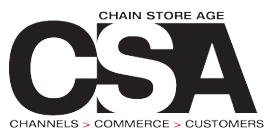Chain Store Age: Beyond the Work Order: The New, Fully Integrated Model of Facilities Management

Q&A with Varun Sawhney
Vice President, Business Development
ServiceChannel

ChainStoreAge: Many people might think of facilities management as a static industry, providing mostly the same types of services year in and year out. But that’s not the case anymore. Retailers are starting to demand integrated, data-driven solutions from all their supply chain partners. How are you approaching this on the facilities front?
Varun Sawhney: Data is becoming increasingly important for all our retail clients as they seek to ensure their brands are being managed, while keeping costs in check. They want to leverage their data with all of their partners and suppliers to get greater visibility across their operations, better negotiate pricing and make smarter decisions based on real-time information.
 On the facilities front, our clients are using our system to drill down into objective contractor performance based on their own KPIs. They’re also using data to identify outlier stores, regions or trades, so they can focus on the issues that truly demand their attention.
On the facilities front, our clients are using our system to drill down into objective contractor performance based on their own KPIs. They’re also using data to identify outlier stores, regions or trades, so they can focus on the issues that truly demand their attention.
Another way data’s helping in their supply chain is by enabling them to see where they’re spending inefficiently on parts and supplies. For the first time, many are now seeing their supply
and material costs as controllable expenses. Only by truly understanding the details of these costs can they identify areas of improvement and potential savings.
CSA: How has this changed your relationship with retail stakeholders?
VS: With more than 100,000 locations and over 200 brands utilizing our platform, we are an objective resource for many of the world’s leading facilities programs looking to gain insight into their day-to-day operations via their own independent data, rather than relying solely on their supply chain partners.
They’re increasingly relying on us to provide easy ways to capture and analyze the data across their repair and maintenance operations, and then help implement industry best practices gleaned from across our client base.
CSA: How are your clients using mobile technology to drive their day-to-day business?
VS: We’re seeing more of our facilities management clients looking to be able to do their work whenever and wherever they are — on site or on the go. They need to be able to respond to status requests and address emergency issues on the spot. More stores are also enabling their on-site staff to report repair & maintenance issues right from the sales floor through their mobile devices.
We’ve rolled out mobile solutions so clients can enter service requests and even take pictures to go along with a request, all without having to wait to go back to their office.
CSA: What are the key attributes a retailer should look for in a facilities service partner? How is this different than outsourcing?
VS: In some situations, outsourcing your facilities operations to a third party can look very attractive, with promised costs savings and a reduced workload. It’s certainly a decision that we think retailers need to think through carefully as there can be unintended consequences to not only the facilities programs, but also to the brand. When considering this type of move, it’s important to realize that turning over these responsibilities to a third party can introduce several new and unforeseen risks.
First, the quality of services provided is often not up to par. There are great service companies out there, but you have no control over who does the work at your site, and you’ll often be entirely dependent on those your outsourcer has relationships with that may not have the requisite background or experience. There also can be compliance issues as you may find that you have contractors on site who lack proper insurance or, worse, have expired insurance and are missing other credentials.
Outsourcing increases the risk to your company in a number of ways. We believe that ‘brand uptime’ — how your brand’s perceived in the marketplace — is directly based on your ‘store uptime.’ Outsourcing maintenance services means you’re basically outsourcing your store uptime, and thus your brand’s reputation, to someone else.
Lastly, savings promised by brokers usually never materialize. Many companies we work with have tried outsourcing in the past – in the hopes of reducing costs – only to return to an internally managed model when the savings never appeared.
{{cta(’34c1a114-388a-4ae6-bb4a-361dc9e878d1′,’justifycenter’)}}



